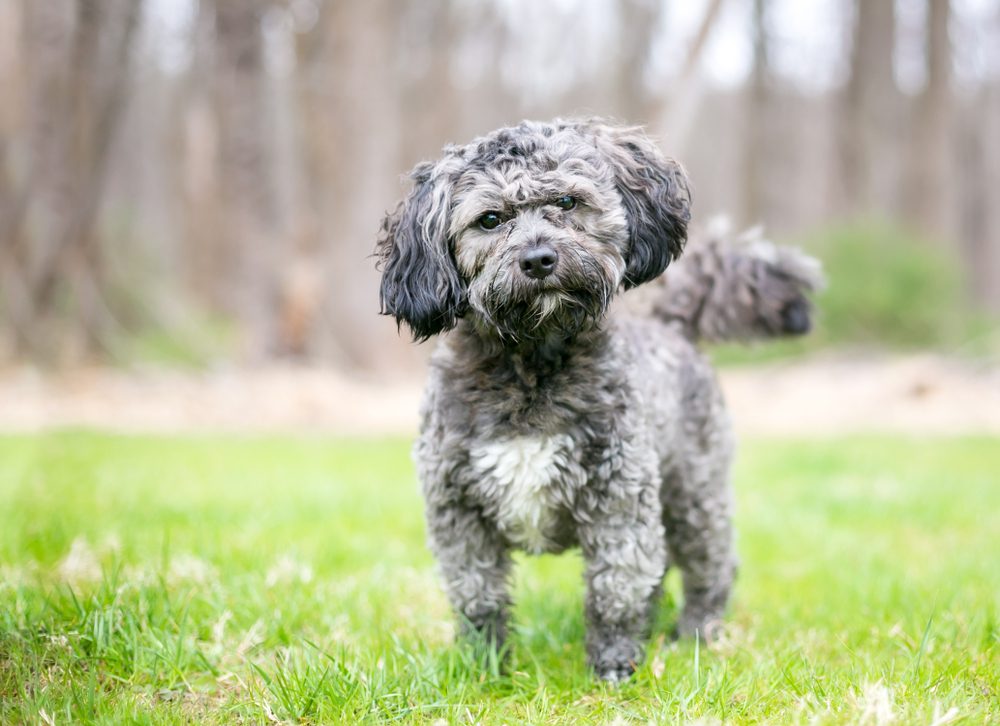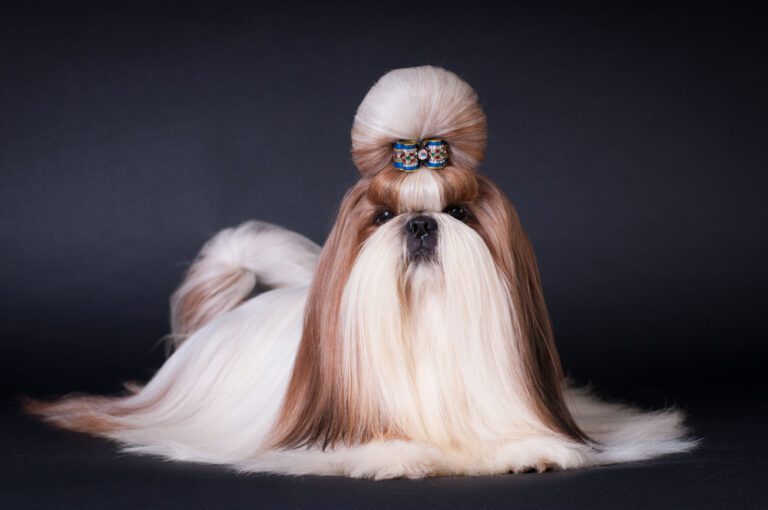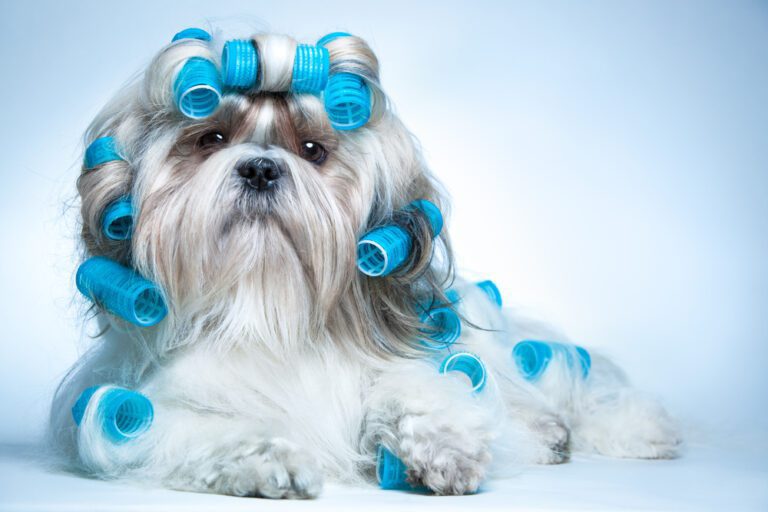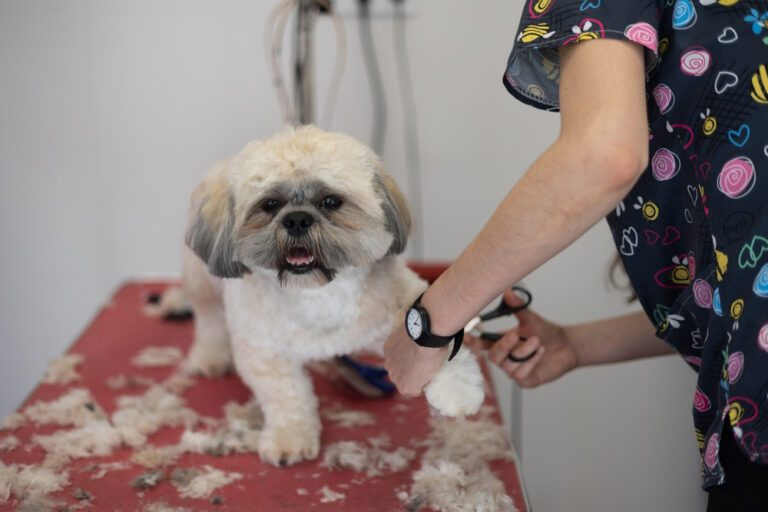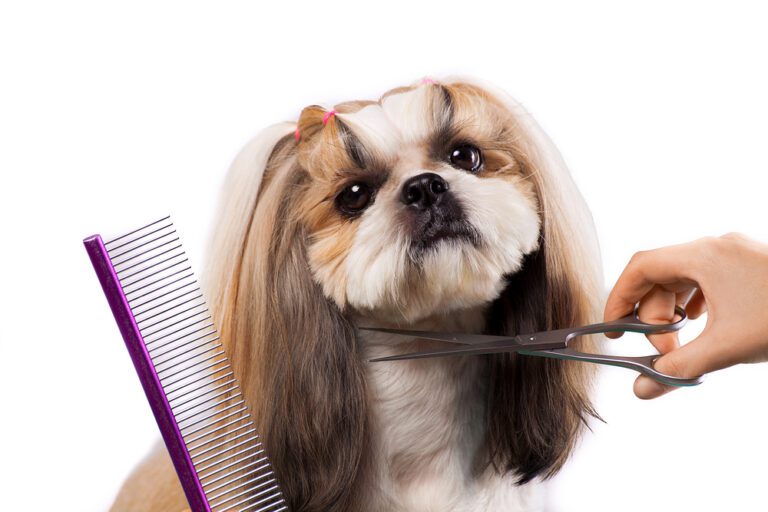Havanese Shih Tzu Mix The Perfect Breed: Unveiling the Secrets
Regarding the world of canine companionship, the Havanese Shih Tzu Mix emerges as a delightful blend of two distinct breeds, offering a perfect balance of charm, intelligence, and affection. In the realm of designer dogs, this hybrid has captured the hearts of many dog enthusiasts for its unique combination of traits. This article aims to explore the enchanting world of the Havanese Shih Tzu Mix, shedding light on its origins, characteristics, and the secrets that make it a beloved companion for families and individuals alike.
As we embark on this journey into the canine cosmos, we’ll unravel how two storied breeds, the Havanese and Shih Tzu, create a harmonious mix. Beyond the allure of their silky coats and expressive eyes, there’s a deeper story to be told—a narrative of companionship, loyalty, and the distinctive qualities that set this hybrid apart.
Join us as we delve into the intricacies of the Havanese Shih Tzu Mix, discovering the secrets that make it a perfect choice for those seeking not just a pet but a devoted friend. From its historical roots to its contemporary allure, we’ll uncover the layers of this unique breed, providing insights into what makes it a cherished member of countless households worldwide.
The History and Characteristics of the Havanese Shih Tzu Mix
The Havanese Shih Tzu Mix, often affectionately called the “Havashu,” represents a captivating fusion of two breeds, each with a rich history and distinctive traits. To truly understand this delightful hybrid, it’s essential to delve into the historical roots and critical characteristics that shape its personality and appearance.
Historical Tapestry
The Havanese Shih Tzu Mix’s story begins with the Havanese, a breed known for its Cuban heritage. Initially adored by Cuban aristocrats in the 18th century, the Havanese made its way to other parts of the world, captivating hearts with its affectionate nature and striking silky coat. On the other hand, the Shih Tzu, rooted in ancient China, has a royal history, having been favored by Chinese emperors for its regal appearance.
The Havashu, therefore, carries a blend of these diverse histories, creating a unique tapestry that combines the elegance of the Shih Tzu with the spirited charm of the Havanese.
Characteristics That Define
The Havanese Shih Tzu Mix inherits a medley of characteristics from its parent breeds, resulting in a dog that is not only visually appealing but also possesses a delightful temperament. One of the most notable features is its coat—a silky, often wavy, blend that requires regular grooming to maintain its luster.
In terms of size, the Havashu typically falls into the small to medium range, making it a suitable choice for various living environments. Its expressive eyes, framed by a characteristic fur mane, contribute to its endearing appearance.
Temperamentally, the Havanese Shih Tzu Mix is renowned for its affectionate and friendly nature. These dogs thrive on human companionship, displaying a friendly demeanor that makes them excellent family pets. Their intelligence, inherited from both parent breeds, makes them trainable and adaptable.
This unique combination of history and characteristics sets the Havanese Shih Tzu Mix apart, making it a sought-after companion for those seeking a loving, adaptable, and visually striking addition to their homes. In the subsequent sections, we will delve deeper into the care requirements, training tips, and special considerations in welcoming a Havashu into your life.
Health Considerations for the Havanese Shih Tzu Mix
Ensuring the well-being of your Havanese Shih Tzu Mix, affectionately known as the “Havashu,” involves a thoughtful understanding of potential health considerations. This section delves into crucial aspects that responsible pet owners should be aware of to provide optimal care for their furry companions.
1. Exploring Genetic Predispositions
The Havashu, like many hybrid breeds, may inherit certain health conditions from its parent breeds, the Havanese and Shih Tzu. Understanding these genetic predispositions is crucial for proactive health management. Typical concerns may include issues related to the eyes, ears, and joints. Regular veterinary consultations and genetic testing can aid in early detection and preventive measures.
2. Prioritizing Preventive Measures
Prevention is vital to maintaining the well-being of your Havashu. Maintaining a vaccination schedule tailored to your dog’s needs ensures protection against common canine diseases. Regular check-ups, including dental examinations, contribute to overall health. Dental care is often overlooked but is vital in preventing issues such as gum disease, which can impact Havashu’s overall health.
3. Vigilance in Monitoring
Proactive pet ownership involves vigilant monitoring of your Havashu’s behavior and physical condition. Recognizing subtle changes early on can be crucial in addressing potential health issues promptly. From changes in eating habits to alterations in activity levels, being attuned to your dog’s normal behavior allows for timely intervention and effective management.
4. Establishing a Routine
Regular veterinary visits are the cornerstone of a proactive health care routine for your Havashu. These visits go beyond vaccinations and allow the veterinarian to assess overall health, detect early signs of potential issues, and provide tailored advice on nutrition, exercise, and preventive care. Establishing a consistent routine ensures comprehensive health monitoring.
5. Customizing Care
Each Havashu is unique, and their healthcare plans should reflect this individuality. Tailoring care involves considering age, activity level, and specific health concerns. This personalized approach ensures that your Havashu receives the attention and care required for a happy and healthy life.
6. Building a Relationship with Your Veterinarian
A strong partnership with your veterinarian is fundamental to the proactive health management of your Havashu. Regular communication, openness about observations, and a collaborative approach to decision-making enhance the quality of care. Establishing trust and a good rapport with your veterinarian fosters a supportive environment for your Havashu’s overall well-being.
7. Crafting a Balanced Diet
Crafting a balanced diet tailored to the specific nutritional needs of the Havashu is paramount for their overall health. Consultation with a veterinarian can guide you in selecting the right type and amount of food, considering factors such as age, weight, and activity level. A nutritious diet contributes to a shiny coat, healthy weight, and overall vitality.
8. Navigating Food Allergies and Sensitivities
Just like humans, dogs can also have food allergies or sensitivities. Navigating these requires careful observation of your Havashu’s reactions to different foods. Your veterinarian can assist in identifying potential allergens and recommending suitable dietary adjustments. A well-managed diet contributes to physical health, happiness, and contentment.
9. The Role of Hydration
Adequate hydration is often overlooked but is integral to your Havashu’s well-being. Access to clean and fresh water is essential for various bodily functions, including digestion and temperature regulation. Monitoring water intake and ensuring hydration supports overall health and contributes to a happy and energetic Havashu.
Navigating the health landscape of the Havashu involves a proactive approach, with regular veterinary check-ups as a cornerstone. Pet owners can implement preventive measures and promptly address emerging health issues by understanding potential genetic predispositions.
The Havashu’s unique blend of Havanese and Shih Tzu characteristics necessitates individualized care plans. Whether it’s maintaining a proper diet, monitoring for allergies, or addressing specific health concerns related to their size, responsible ownership involves a commitment to the overall well-being of these charming companions.

Training and Behavior Tips for the Havanese Shih Tzu Mix
Training the Havanese Shih Tzu Mix, affectionately known as the “Havashu,” is an enriching journey that blends the intelligence of the Havanese with the spirited charm of the Shih Tzu. This section provides valuable insights and tips for fostering positive behavior and effective training strategies for your Havashu companion.
1. The Sociable Nature
The Havashu is renowned for its friendly and affectionate nature. These dogs thrive on human companionship and form strong bonds with their owners. Embracing their affectionate behavior involves reciprocating the love and creating an environment that nurtures their need for interaction. Regular cuddles, playtime, and positive interactions contribute to a happy and well-adjusted Havashu.
2. Intelligence at Play
Intelligence is a standout trait in Havashu’s personality. This hybrid breed combines the Havanese’s keen intellect with the Shih Tzu’s cleverness. Recognizing their quick learning abilities opens the door to practical training sessions. Havashus often grasp commands swiftly, making them a joy to train. Mental stimulation through puzzle toys and interactive games further engages their intelligent minds.
3. Adaptability in Training
Havashu’s adaptability is a crucial asset in training. Each dog is unique, and tailoring training approaches to their personality ensures a positive learning experience. Some Havashus may respond well to structured training sessions, while others may thrive in a more relaxed and playful environment. Being attuned to their preferences allows for a training regimen that suits their disposition.
4. Reward-Based Training
Positive reinforcement is a cornerstone of practical Havashu training. Reward-based training involves acknowledging and rewarding good behavior with treats, praise, or affection. This encourages the Havashu to associate positive actions with positive outcomes, creating a cooperative and motivated learner.
5. Consistency Is Key
Consistency is fundamental in Havashu training. Establishing clear expectations and boundaries helps the Havashu understand the parameters of acceptable behavior. Consistency provides security and helps avoid confusion, contributing to a well-behaved and confident Havashu.
6. Patience in Training
Patience is a virtue in Havashu training. These dogs are eager to please and respond well to patient guidance. Recognizing their willingness to please fosters a positive training environment. Break down commands into manageable steps, celebrate small victories, and acknowledge their efforts, reinforcing the bond between owner and Havashu.
7. Early and Ongoing Socialization
Early and ongoing socialization is crucial for a confident Havashu. Exposing them to various environments, sights, and sounds from a young age builds resilience and adaptability. Gradual introductions to new experiences create a well-rounded and confident companion.
8. Interaction with Other Pets
Positive interactions with other pets contribute to a well-socialized Havashu. Supervised playdates and controlled introductions allow for the development of positive relationships with other animals. This social harmony ensures a Havashu that is comfortable and confident in diverse social settings.
9. Positive Exposure to People
Positive exposure to people is vital in shaping a well-adjusted and friendly Havashu. Regular interactions with various individuals, including friends, family, and strangers, foster a friendly and approachable demeanor. This social confidence extends to different environments, making the Havashu an adaptable and pleasant companion.
10. Separation Anxiety
Addressing separation anxiety involves gradual desensitization to departures and arrivals. Creating a secure and comfortable space, providing engaging toys, and establishing a routine can help alleviate stress. Gradual departures and arrivals and positive reinforcement contribute to a sense of security.
11. Barking and Excessive Energy
Barking and excessive energy can be managed through positive outlets. Engaging in regular exercise, both physical and mental, helps channel their energy constructively. Training sessions focusing on commands like “quiet” and providing stimulating toys contribute to a well-behaved content Havashu.
12. Consistent Training for Lifelong Positive Behavior
Consistency in training is the key to lifelong positive behavior. Consistent reinforcement of commands, positive interactions, and maintaining established routines contribute to a well-behaved Havashu throughout their life. Even as they mature, regular training sessions reinforce the bond and shape positive behaviors.
Training the Havashu is a collaborative effort that builds a strong bond between owner and pet. Understanding the unique personality traits of this hybrid breed is crucial for tailoring training approaches that resonate positively with their affectionate and intelligent nature.
Positive reinforcement techniques, such as reward-based training, establish a foundation of trust and cooperation. Consistency in expectations and patience during training sessions are vital elements in cultivating a well-behaved Havashu.
Socialization plays a pivotal role in shaping Havashu’s confidence and adaptability. Early and ongoing exposure to various environments, other pets, and different people contributes to a well-adjusted and socially adept companion.
Addressing specific training challenges, such as separation anxiety or excessive barking, requires a thoughtful approach that considers the individual needs and sensitivities of the Havashu. Consistent training contributes to a harmonious relationship, ensuring a well-mannered and happy Havashu throughout their life.
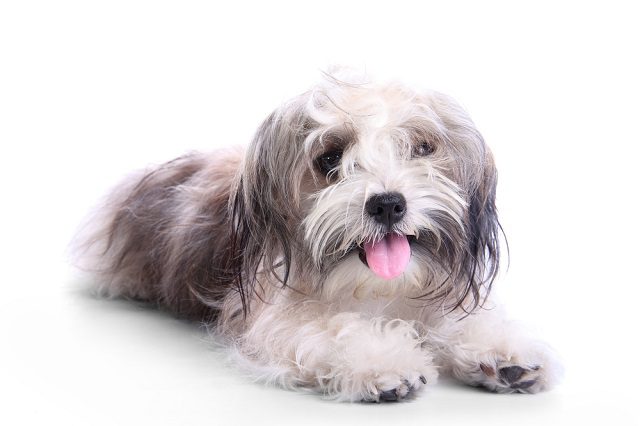
Grooming and maintenance requirements for the Havanese Shih Tzu Mix
Ensuring that your Havanese Shih Tzu Mix, affectionately known as the “Havashu,” maintains a healthy and well-groomed appearance is a crucial aspect of responsible pet ownership. This section provides comprehensive insights into the grooming and maintenance requirements tailored to the unique characteristics of the Havashu.
Coat Care
1. Grooming Essentials for the Havashu’s Coat
The Havashu boasts a luxurious coat that blends the silky textures of both the Havanese and Shih Tzu breeds. Grooming this unique blend involves regular care to maintain its health and appearance. Understanding the silky blend requires selecting appropriate grooming tools, such as a slicker brush and comb, to navigate the dense yet soft fur. Removing tangles and mats is essential to prevent discomfort and maintain the Havashu’s distinctive coat texture.
2. Regular Brushing Routine
A consistent brushing routine is a cornerstone of Havashu coat care. Brushing prevents tangles and mats and distributes natural oils, promoting a healthy, glossy coat. Aim for a brushing session at least a few times weekly to keep the coat in optimal condition. This routine enhances the Havashu’s aesthetic appeal and contributes to their overall well-being.
3. Trimming and Shaping for a Polished Look
While regular at-home grooming is crucial, occasional professional grooming provides extra care. Professional groomers can expertly trim and shape Havashu’s coat to maintain a polished and well-groomed appearance. This includes attention to specific paws, ears, and tail areas. Professional grooming sessions enhance the Havashu’s visual appeal and contribute to a comfortable and healthy coat.
Ears and Eyes
1. Ear Inspection and Cleaning
The Havashu’s floppy ears require regular inspection and cleaning to prevent infections and ensure hygiene. Check for signs of redness, odor, or excessive wax buildup. Gently clean the ears with a vet-recommended solution using a soft cotton ball. Regular ear care contributes to the prevention of ear-related issues and maintains your Havashu’s overall well-being.
2. Eye Care
Gentle eye cleaning is essential to maintain clear and healthy eyes in Havashu. Carefully wipe away any discharge or tear stains using a damp, soft cloth. Pay attention to signs of irritation or redness, which may indicate underlying issues. Regular eye care enhances the aesthetic appeal of your Havashu and ensures their comfort and visual health.
3. Monitoring for Signs of Irritation or Discomfort
Regular monitoring for irritation or discomfort in the ears and eyes is crucial. Excessive scratching, redness, or discharge may indicate an issue that requires attention. Prompt veterinary care can address these concerns and prevent potential complications, ensuring the continued well-being of your Havashu.
Nail Care
1. Regular Nail Trims
Regular nail trims are essential for preventing overgrowth and ensuring your Havashu’s comfort. Overgrown nails can lead to discomfort and affect their gait. Use dog-specific nail clippers and trim gradually, avoiding the quick. Regular trims from an early age help your Havashu become accustomed to the process, making it a stress-free experience.
2. Familiarizing Your Havashu with Nail Care
Familiarizing your Havashu with nail care involves positive reinforcement techniques. Gradually introduce them to the tools, rewarding calm behavior with treats and praise. Creating a positive association with nail care from puppyhood contributes to a cooperative attitude during nail trims.
3. Tips for Stress-Free Nail Trimming
For those who find nail trimming challenging, seeking professional assistance is a viable option. Professional groomers or veterinarians can efficiently trim your Havashu’s nails, ensuring a stress-free experience. Regular professional nail care, in addition to at-home trims, maintains optimal nail health for your Havashu.
Dental Hygiene
1. Establishing Healthy Oral Habits from Puppyhood
Dental care is crucial to Havashu’s grooming, starting from puppyhood. Introduce dental care gradually, allowing your Havashu to become accustomed to tooth brushing. Use a dog-friendly toothbrush and toothpaste, promoting healthy oral habits to prevent dental issues in the future.
2. Brushing Techniques
Brushing your Havashu’s teeth regularly is vital in maintaining clean teeth and preventing dental issues. Employ gentle brushing techniques, paying attention to all tooth surfaces. Dental hygiene treats and toys can complement brushing efforts, contributing to oral health.
3. Dental Treats and Toys
Dental treats and toys are supplementary measures for Havashu’s oral health. Opt for products that promote dental hygiene, such as those that reduce plaque and tartar buildup. These treats and toys provide a tasty reward and contribute to a happy and healthy smile for your Havashu.
Establish Bathing Routine
1. Determining Bathing Frequency
Determining the frequency of baths for your Havashu depends on factors such as activity level, coat type, and overall health. While Havashus generally does not require frequent baths, regular grooming sessions help maintain a clean and healthy coat. Factors such as outdoor activities and exposure to allergens may influence bathing frequency.
2. Selecting Suitable Shampoos
When bathing your Havashu, select suitable shampoos that cater to their skin and coat needs. Choose mild, dog-friendly shampoo.
Grooming and maintenance for the Havashu are not just aesthetic considerations but integral components of overall well-being. A well-groomed Havashu looks and smells good and enjoys improved comfort and health.
Exercise and activity needed for the Havanese Shih Tzu Mix
Understanding and fulfilling the exercise and activity requirements of your Havanese Shih Tzu Mix, affectionately known as the “Havashu,” is essential for their overall well-being and happiness. This section provides valuable insights into the energy levels and activity preferences of the Havashu, offering guidance on how to keep them physically and mentally stimulated.
Assessing Energy Levels
1. Understanding the Havashu’s Unique Energy Dynamics
The Havashu, a delightful blend of Havanese and Shih Tzu, typically exhibits moderate energy levels. However, individual variations exist, and it’s crucial to understand Havashu’s unique dynamics. Age, health, and personality contribute to their energy levels. Observing their behavior and response to activities helps tailor an exercise plan that meets their needs.
2. Tailoring Exercise Plans to Individual Needs
Tailoring exercise plans involves striking a balance between physical activity and mental stimulation. While some Havashus may thrive on vigorous exercise, others prefer gentler activities. Size, age, and any existing health conditions should be considered. Tailored plans ensure that your Havashu remains healthy, happy, and engaged.
3. Recognizing Signs of Sufficient Exercise
A well-exercised Havashu is content. Signs of sufficient exercise include a calm demeanor, reduced restlessness, and a healthy weight. Regular play and physical activities contribute to their overall well-being. However, it’s essential to monitor for signs of fatigue or stress, adjusting the intensity and duration of workouts accordingly.
Engaging Indoor Activities
1. Interactive Toys for Mental Stimulation
Indoor activities are vital, especially during inclement weather. Interactive toys, such as puzzle feeders and treat-dispensing toys, engage their minds and provide a stimulating challenge. Mental stimulation is equally important as physical exercise for Havashu’s overall happiness and well-rounded development.
2. Indoor Play Sessions
Create indoor play sessions that blend fun and exercise. Fetch, tug-of-war, and hide-and-seek are excellent choices. These activities provide physical exercise and strengthen the bond between you and your Havashu. Rotate toys regularly to keep the play sessions exciting and prevent boredom.
3. Incorporating Training into Daily Indoor Routines
Incorporating training into daily routines is a two-fold benefit. It provides mental stimulation and reinforces obedience. Short training sessions focusing on commands like sit, stay, and come can be integrated into daily activities. This not only exercises their minds but also establishes a well-behaved Havashu.
Outdoor Exercise and Play
1. Daily Walks
Daily walks are fundamental for Havashus, allowing them to explore the outdoors and expend energy. Aim for at least 20-30 minutes of walking daily, adjusting based on your Havashu’s age and energy level. Walks also provide opportunities for socialization and exposure to different stimuli.
2. Off-Leash Play in Secure Areas
In secure environments, off-leash play benefits Havashu’s energetic spirit. Enclosed areas allow them to run freely, satisfying their instincts. Supervise closely to ensure their safety, and choose locations with appropriate fencing to prevent them from wandering off.
3. Exploring New Environments
Adding variety to outdoor adventures prevents monotony. Take your Havashu to different parks, trails, or beaches to explore new environments. The sensory stimulation from varied surroundings contributes to their mental well-being. Always consider safety and adhere to local regulations.
Social Interaction and Playdates
1. Canine Companionship: The Importance of Socialization
Social interaction is integral to Havashu’s well-rounded development. Encourage canine companionship through supervised play with other friendly dogs. Socialization provides exercise, fosters positive behavior, and reduces the risk of behavioral issues.
2. Organized Playdates: Fostering Positive Relationships
Organizing playdates with other dog owners is a fantastic way to foster positive relationships. Ensure compatibility in size and energy levels for a harmonious play experience. Structured playdates contribute to your Havashu’s social confidence and overall happiness.
3. Dog-Friendly Parks: Safe Spaces for Social Interaction
Dog-friendly parks provide safe spaces for social interaction. These environments allow your Havashu to interact with other dogs, promoting positive social behavior. Always observe their interactions and intervene to ensure a positive and enjoyable experience.
Adapting Exercise Routines as They Age
1. Understanding Changing Energy Levels in Senior Havashus
As Havashus ages, their energy levels may decrease. Understanding and respecting these changes is crucial. While they may not require as much vigorous exercise, maintaining a routine with gentle activities is essential for joint health and overall well-being.
2. Gentle Exercise and Joint Care for Aging Companions
Gentle exercise, such as short walks and light play, supports joint health in aging Havashus. Consider the use of joint supplements or specialized diets to address age-related concerns. Regular veterinary check-ups can help adapt exercise routines based on individual health needs.
3. Monitor Health and Adjust Activities Accordingly
Regularly monitor your senior Havashu’s health and adjust activities accordingly. Be attentive to signs of discomfort, fatigue, or changes in behavior. Please consult your veterinarian to create an exercise plan that aligns with their age and health status, ensuring a comfortable and fulfilling senior life.
Understanding Havashu’s energy dynamics and tailoring exercise plans to their needs are crucial aspects of responsible ownership. Regular physical and mental stimulation keeps them healthy and contributes to well-behaved content Havashu.
Finding and selecting a reputable breeder for the Havanese Shih Tzu Mix
Bringing a Havanese Shih Tzu Mix, or Havashu, into your family is an exciting journey, and establishing a reputable breeder is a pivotal first step.
Researching Reputable Breeders
1. Utilizing Online Resources and Breed Directories: Begin your search by exploring reputable online resources and breed directories. Websites dedicated to dog breeds often feature breeder directories or recommendations. Look for breed-specific forums and communities where enthusiasts and experienced owners share insights.
2. Seeking Recommendations from Veterinary Professionals and Local Breed Clubs: Veterinary professionals and local breed clubs are valuable sources of information. Consult with your veterinarian for recommendations, or contact breed clubs. Members of these clubs are likely to be well-connected and can guide you to responsible breeders.
3. Attending Dog Shows and Events: Attend dog shows and events to observe Havashus in person and connect with breeders. Responsible breeders often participate in these events to showcase their dogs. It’s an excellent opportunity to meet breeders, ask questions, and assess the temperament and physical attributes of the dogs.
Evaluating Breeder Practices
1. Assessing the Breeding Environment: A reputable breeder maintains a clean and well-maintained dog environment. When visiting a breeder’s facility, pay attention to cleanliness, living conditions, and the general well-being of the dogs. A healthy and happy breeding environment is indicative of responsible practices.
2. Inquiring About Health Screening and Genetic Testing: Responsible breeders prioritize the health of their dogs and conduct thorough health screenings and genetic testing. Inquire about the breeder’s health practices, including screening for common breed-specific issues—request documentation of health clearances for the puppy’s parents.
3. Examining Socialization Practices for Puppies: A reputable breeder focuses on the socialization of their puppies. Ask about the breeder’s socialization practices, including exposure to various stimuli and experiences. Well-socialized puppies are more likely to develop into balanced and adaptable companions.
Interviewing Potential Breeders
1. Asking About Breeding Philosophy and Goals: Engage in conversations about the breeder’s philosophy and goals. A responsible breeder is passionate about the breed, prioritizes the well-being of their dogs, and strives to contribute positively to breed standards. Ask about their breeding motivations and commitment to the breed’s welfare.
2. Inquiring About Socialization Practices for Puppies: Socialization is essential for a puppy’s development. Inquire about how the breeder introduces puppies to different environments, people, and stimuli. A breeder who invests time in early socialization contributes to the puppy’s overall behavioral health.
3. Discussing Health Guarantees and Aftercare Support: Responsible breeders provide health guarantees and aftercare support. Discuss the breeder’s policies regarding genetic health issues and inquire about their post-purchase support. A breeder who stands by their puppies’ health demonstrates commitment and responsibility.
Visiting the Breeder’s Facility
1. Observing the Living Conditions of the Dogs: Schedule a visit to the breeder’s facility to observe the dogs’ living conditions. Ensure that the dogs are kept in clean and spacious surroundings. Healthy and well-cared-for dogs are indicative of a reputable breeder.
2. Interacting with the Puppies and Adult Dogs: Interact with puppies and adult dogs to gauge their behavior and temperament. Well-socialized and happy dogs are more likely to thrive in a family setting. Assessing the dogs’ interactions can provide insights into the breeder’s dedication to producing well-adjusted companions.
3. Verifying Documentation of Health Records and Certifications: Request and verify documentation of health records and certifications for the puppy’s parents. Responsible breeders maintain thorough health clearances, vaccinations, and genetic testing records. Transparency in providing this information reflects the breeder’s commitment to openness.
Recognizing Red Flags
1. Lack of Transparency Regarding Health Records: Beware breeders who need to be more transparent about health records or hesitate to provide documentation. A reputable breeder willingly shares information about their dogs’ health and genetic history.
2. Unwillingness to Answer Questions or Provide References: A responsible breeder is open to answering questions and providing references from previous buyers. It could be a red flag if a breeder hesitates or avoids such inquiries.
3. Multiple Litters Available Without Consideration for Proper Care: Be cautious if a breeder has multiple litters available simultaneously without adequate resources or attention to each litter. Quality breeding involves careful planning and individualized care for each puppy.
Understanding the Importance of Ethical Breeding
1. Prioritizing Health and Temperament Over Quantity: Ethical breeders prioritize the health and temperament of their dogs over quantity. They carefully plan each breeding to enhance positive traits and work towards bettering the breed.
2. Promoting Responsible Breeding Practices: Responsible breeders adhere to ethical breeding practices, focusing on the well-being of the dogs and maintaining breed standards. They contribute positively to the breed’s future by prioritizing health, temperament, and quality.
3. Contributing to the Overall Welfare of the Breed: Reputable breeders contribute to the overall welfare of the breed by participating in breed clubs, adhering to ethical standards, and actively working to minimize genetic issues. Their commitment extends beyond individual litters to the betterment of the entire breed.
Finding and selecting a reputable breeder is a crucial investment in the health and happiness of your Havashu. By following these guidelines, you can confidently embark on your journey, knowing you provide a loving home for a well-cared-for and ethically-bred companion.
Conclusion: Is the Havanese Shih Tzu Mix the perfect breed for you?
In the final analysis, whether the Havanese Shih Tzu Mix or Havashu is the perfect breed for you hinges on various factors. With its endearing blend of affectionate charm and intelligence, the Havashu can make an ideal companion for those ready to invest time in grooming, training, and providing a loving home.
However, defining the “perfect” breed is a personal journey. Assessing your lifestyle, preferences, and commitment level is vital, as well as consulting with professionals and experienced owners to ensure a harmonious fit. Ultimately, the perfect breed aligns with your expectations, bringing joy and lasting companionship. Whether the Havashu fits that bill or another breed captures your heart, the bond you forge with your canine friend will undoubtedly be a source of immeasurable joy and cherished moments.

